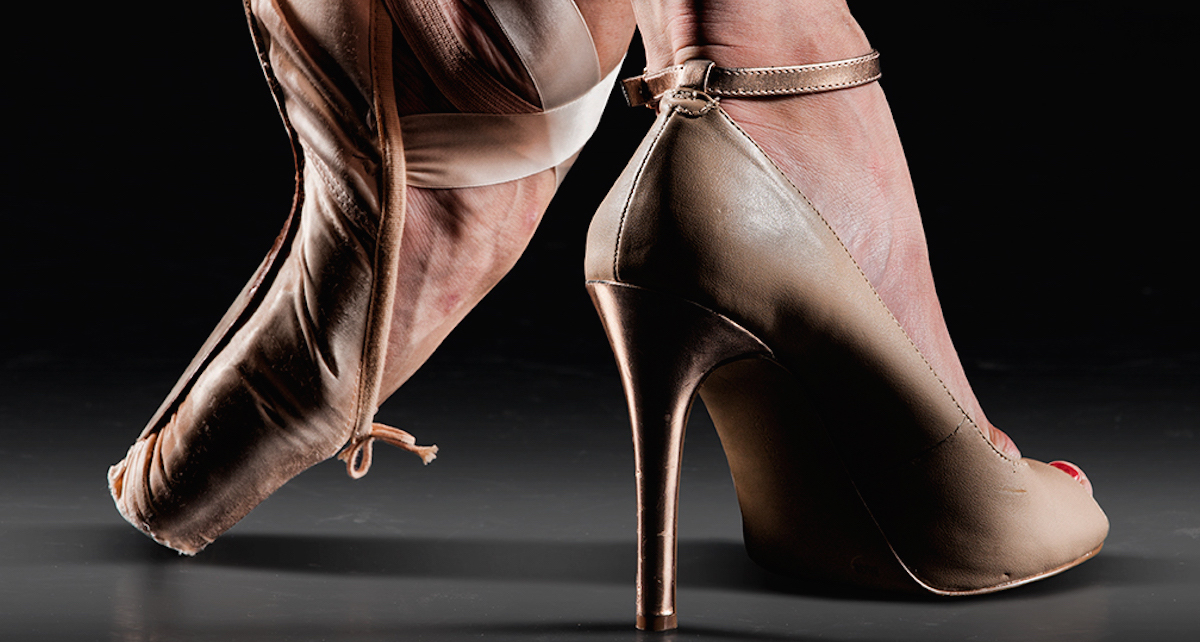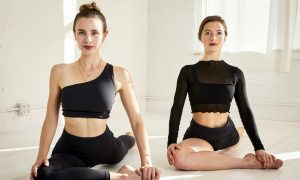As dancers, our feet take a lot. Without their nuanced articulation and strength, we wouldn’t be able to dance in the captivating ways that we do. But they face a lot of stressors because of it. In winter, you can add on tension from cold, drying skin and the holiday sabotage of our body in general. Nutcracker season also asks more of our feet than they’re usually asked of. This winter, be sure to treat your feet with simple methods such as self-massage, smart fabric choices and conscious skin care.
#1. Give yourself a foot massage.
Our feet do a lot for us! They point, flex, ground into the earth and launch us away from it. That’s not including all that they do apart from dancing. Soreness, dry skin, nail issues and other problems are all too common for dancers. How do we solve these issues, in the midst of busy, active and sometimes cash-strapped lives as dancers?
If you can invest the time and money in it, reflexology is a wonderful treatment option for ailing feet. Much research also bears out many other health benefits of the form, a multi-faceted type of foot massage from Eastern medicine. Reputable self-reflexology guides are available online. Ayurvedic (of yoga’s sister health science) guides can also offer direct procedures for heavenly, healing massage. For best results, soak your feet in warm water and massage them with essential oils.
But even dry massage can be beneficial. Focus on one foot at a time. Make small circles, starting at your toes. You can also apply slight pressure along the lines of muscles, in order to lengthen them and disperse the tension being dissolved. Work up to your ankles, hitting all parts of your feet — top, sides and bottoms. Move on to the other foot, repeating the same process. Perhaps offer gratitude toward your feet for how they support you in your dancing and everyday life – all day, every day. They keep you grounded in the earth but help you soar into your hopes and dreams.
#2. Look at your layers.
Notice what you’re wearing on your feet for warmth. Multiple layers of synthetic fabrics can be inexpensive and feel comfortably soft, but they’re often non-breathable. The average person sweats about half a pint from his/her feet daily. Being an active dancer only increases that. With non-breathable synthetic fabrics, the moisture is just locked in.
Once the sweating is done, the moisture remains. That can result in localized cold, where the fabric is touching the skin. Depending upon other temperature and physical factors, one can feel that cold in the body overall. Have you ever worn wet sneakers (maybe from being caught in a rainy day without rain boots), and it made your whole body cold? This sequence can certainly play out with dressing for the cold outdoors, coming into heated buildings, and then going back out again in the cold. Dancers are often in and out of different places for rehearsals, classes, auditions, side jobs, academic classes and more.
All of this combined, wearing socks of non-breathable synthetic fabrics in the winter could spell disaster for the skin of the feet, as well muscular tightness and loss of dexterity within them. Better fabric options include cotton, linen and chambray. Also, try to wear multiple layers that you can remove if needed to avoid overheating – likely then sweating, and experiencing cold when the sweat evaporates.
#3. Lather it up.
Many dancers are concerned that if they make the skin on their feet too soft, then they’ll lose the calluses they need to turn barefoot and comfortably dance en pointe. Those things could happen, so the concern is warranted. But winter tips the scales of the skin’s balance of moisture and drying.
That’s because colder air outside and artificial heat inside can seriously dry out skin. If the skin, including that on calluses, gets too dry, then it could crack. Imagine (or maybe you’ve experienced it, and don’t have to) dancing on open wounds. Painful! So much, in fact, that it could stall your dancing! Therefore, don’t be afraid to lather on the lotion. You can always start with a small amount. Since it’s self-applied, you can customize where and how much you apply. There are many relatively inexpensive brands out there, so you can experiment to find the one that works well for you.
If you’re concerned about applying too many chemical ingredients to your skin, Aveeno (and its generic counterparts) offers an oat-based lotion. If you’re considering the ethics of your product, such as environmental impact and testing on animals, you can find an ethics scorecard for different lotion brands here and here.
You’re in your skin 24/7, and your feet do a lot for you – as a dancer and simply as a person. So it matters to take care of them.
By Kathryn Boland of Dance Informa.















